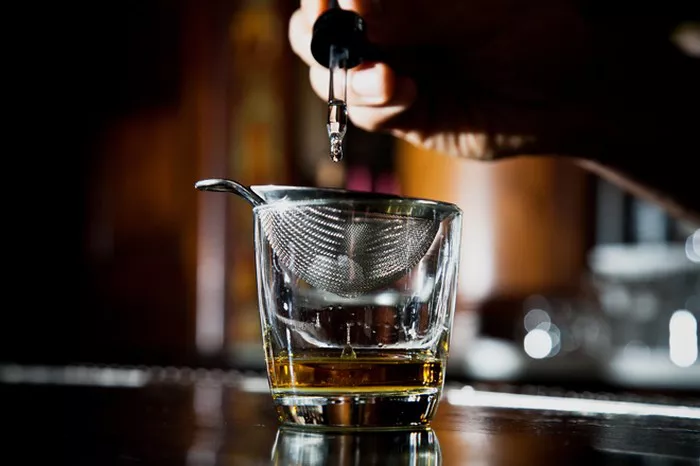Five tourists have tragically died in the past two weeks in the popular Laos holiday town of Vang Vieng, with reports suggesting that methanol poisoning from tainted drinks is to blame. The victims include a British woman, an Australian woman, a US man, and two Danish nationals, while another Australian woman remains in critical condition. The deaths are under investigation, but various reports from tourists indicate that the fatal poisoning may have occurred after consuming alcohol laced with methanol, a toxic substance commonly found in illicitly produced alcohol.
Methanol poisoning has long been a serious issue across Southeast Asia, particularly in impoverished nations along the Mekong River. Despite warnings from foreign governments about the dangers of consuming alcohol in these regions, awareness remains alarmingly low, especially among the backpacker community, who often frequent the area’s bars and party spots.
The Hidden Danger of Methanol
Methanol is a colorless, odorless substance typically used in industrial products like paint thinners, antifreeze, and varnishes. When consumed, it can be fatal in small quantities, with just 25 milliliters enough to cause death. Unlike ethanol, the alcohol found in typical beverages, methanol does not produce immediate symptoms. Victims may not experience signs of poisoning until up to 24 hours later, when nausea, vomiting, and abdominal pain give way to more severe complications such as hyperventilation and respiratory failure.
If not treated promptly, methanol poisoning can have fatality rates between 20% and 40%, depending on the amount consumed and the concentration of methanol. However, if diagnosed within the first 30 hours, medical treatment can significantly mitigate the effects.
Widespread Problem Across Southeast Asia
Southeast Asia is known to have the highest rates of methanol poisoning globally, according to the international medical organization Médecins Sans Frontières (MSF). The issue is particularly prevalent in poorer countries, with regular outbreaks reported in Indonesia, India, Cambodia, Vietnam, and the Philippines.
Indonesia, in particular, is considered a hotspot, with the country having the highest number of methanol poisoning cases in the last two decades. The bootleg alcohol industry in these regions, where methanol is often substituted for ethanol to increase potency and reduce production costs, is a key factor contributing to the widespread problem.
Vang Vieng, where the recent deaths occurred, is a well-known stop on the backpacking circuit through Southeast Asia. The town thrives on tourism, with numerous bars, hostels, and restaurants catering to travelers. However, Laos, one of the poorest and least developed countries in Asia, struggles with insufficient law enforcement and a lack of regulatory oversight in its food and beverage industries. Many local producers craft homemade alcohol, and some unscrupulous vendors add methanol to their products to create stronger drinks at a lower cost.
A Concerning Lack of Regulation
Local experts report that some alcohol producers deliberately use methanol to cut costs, making cheap, counterfeit drinks that appear stronger but are dangerous to consume. One Western diplomat familiar with the region told the BBC that while methanol poisoning incidents are typically linked to lower-quality alcohol, they are not usually the result of malicious intent. Instead, they stem from a combination of poor education, inadequate regulation, and corner-cutting by producers.
“It’s not about bar owners intentionally poisoning tourists,” the diplomat explained. “It’s more about production practices that are not well regulated, and a lack of awareness among both producers and consumers.”
Despite the gravity of the issue, it remains difficult to measure the full extent of methanol contamination due to a lack of data and tracking mechanisms. The exact entry points of tainted alcohol into the supply chain remain unclear.
Raising Awareness and Prevention Efforts
The recent deaths have sparked renewed calls for better public awareness of the dangers of consuming bootleg alcohol, particularly among tourists. Several Western governments have updated their travel advisories to warn travelers about the risks of methanol poisoning in Southeast Asia.
Campaigners have long sought to raise awareness of the problem. Australian man Colin Ahearn, for example, runs a Facebook page called Don’t Drink Spirits in Bali, which educates tourists about the risks of mixed drinks and those made from opened bottles of spirits. Ahearn, who has received frequent submissions about methanol poisoning cases across the region, emphasized that the problem is widespread but often goes unnoticed by tourists.
Despite these efforts, experts caution that it remains difficult for tourists to protect themselves, as checking the origins of every alcoholic drink is simply not feasible while on vacation. “The risks are well-known among tour operators and consulates, but a high-profile awareness campaign is needed to educate the public,” the diplomat noted.
While the tragic deaths in Laos may bring more attention to the issue, experts acknowledge that tackling the root causes of methanol poisoning will require significant improvements in regulation, education, and enforcement across Southeast Asia’s alcohol industry.
Related topics:























